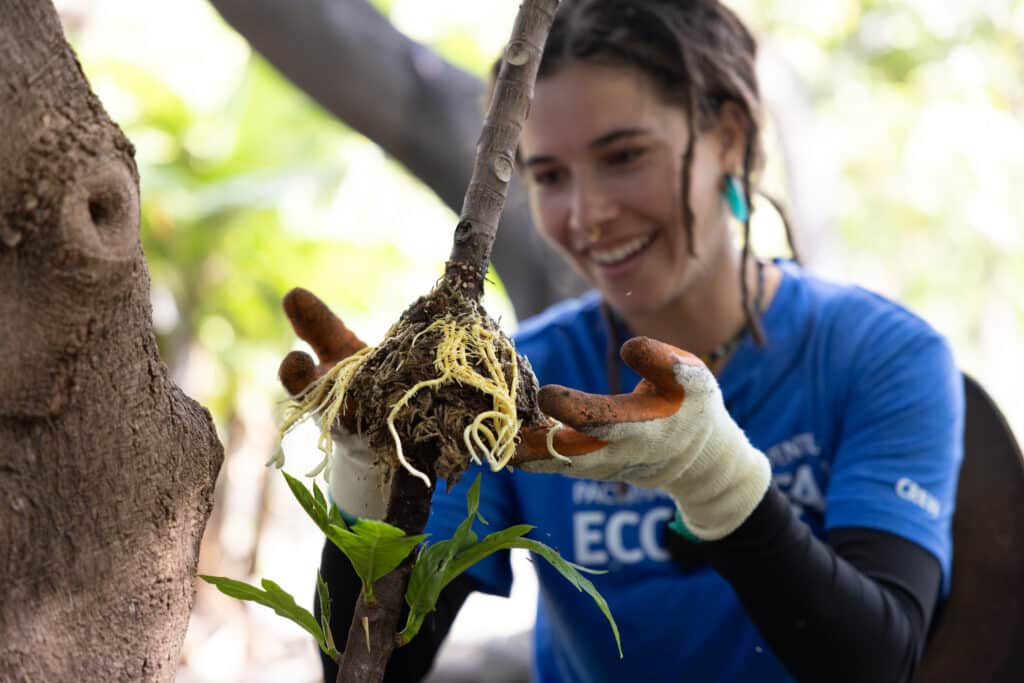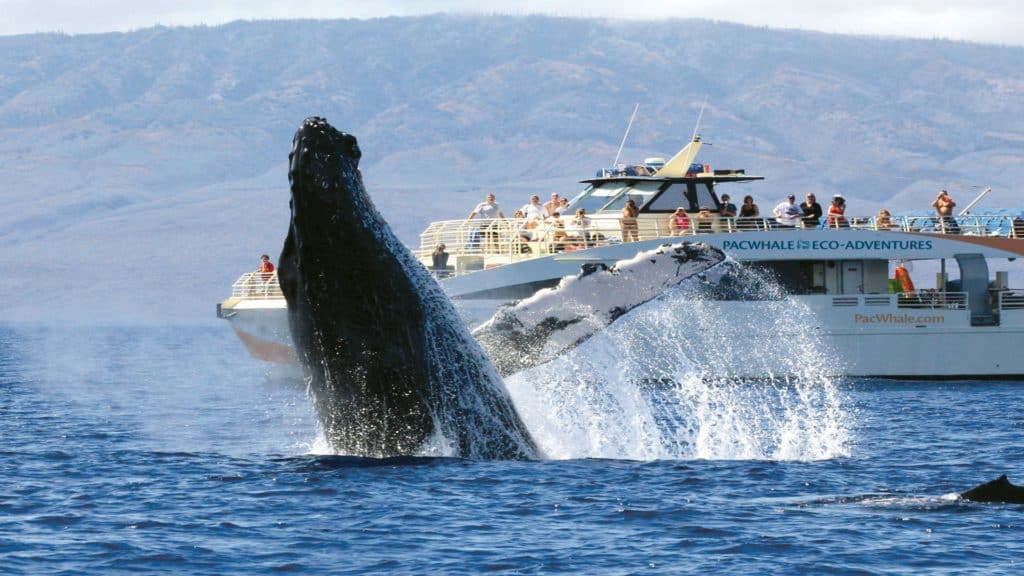On the first field day for our two summer interns, you could sense the excitement as we set out on our research vessel, Ocean Protector, to survey for dolphins. Pacific Whale Foundation Research Department offers internships that give individuals the opportunity to get hands on experience in collecting and analyzing field data on marine mammals.
During our survey the interns were overjoyed when we came across a pod of Hawaiian spinner dolphins, as it was the first time ever seeing this species of dolphin for both young researchers. Spinner dolphins are named for their acrobatic spinning leaps that are unique to this species. These dolphins can spin up to seven times when they propel themselves out of the water. Scientists do not know for certain why they spin, but believe the dolphins may use the aerial spinning behavior as a form of communication or as a way to remove parasites.
-
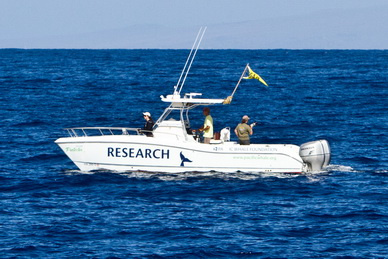
PWF’s research vessel Ocean Protector -
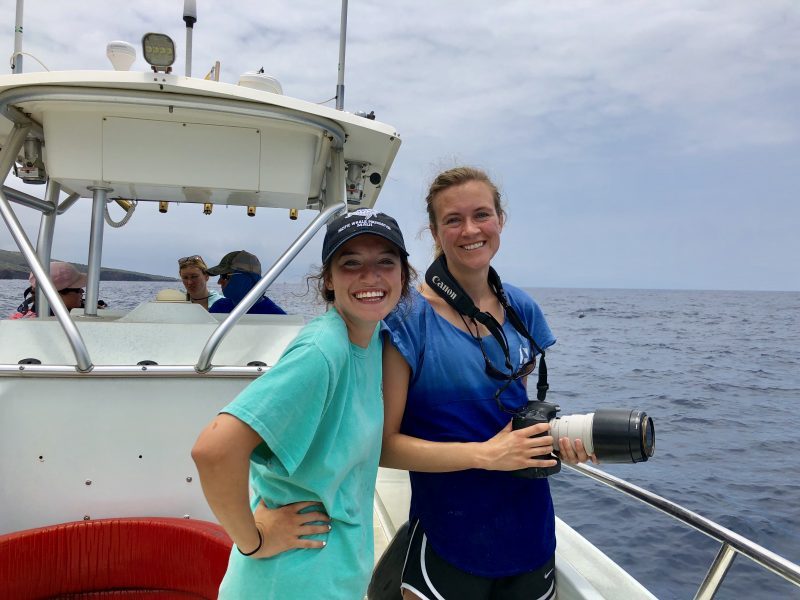
Our summer research interns, Barbara and Jaclyn, aboard Ocean Protector -
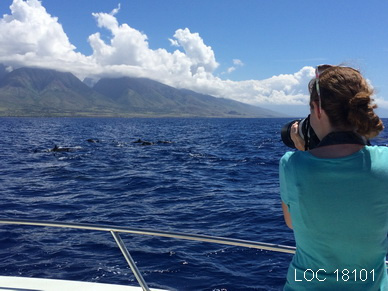
Interns get to practice taking photo-id pictures in the field -
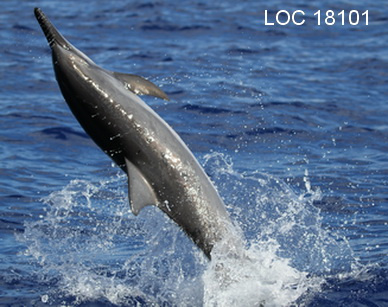
Spinner dolphins are known for their spinning leaps -
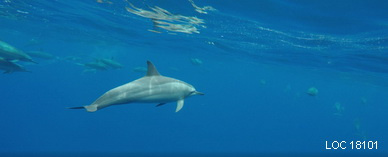
Underwater GoPro footage of a pod of spinner dolphins
As the interns took turns on the research camera, trying to capture photos of individual dorsal fins, they made several important observations about the group of around 80 spinner dolphins that we encountered. They were first struck by the sheer size of the group. Spinner dolphins are usually sighted in large groups of 100-1000 individuals. The interns quickly learned that it can be very overwhelming to take photographs and get an accurate group count of the animals since multiple dolphins will surface at the same time. Due to these difficulties, we also use underwater footage captured on a GoPro to help us gather data on group size. As we continued following the pod and collect data, one of the interns asked why the animals were not spinning. We explained to the interns that spinner dolphins here in Hawaii typically rest during the day time, and feed in large groups offshore at night. Spinner dolphins’ resting behavior usually involves slow swimming, but spins and leaps can also be observed on occasion and can be a sign that the pod has been disturbed. After spending a memorable hour collecting the data and photos needed, we continued on with our field day.
Once back in the office, the interns got the chance to process the data that was collected in the field. This involves looking through the photos that were taken, finding the best photo of each individual, and matching the individuals to our existing spinner dolphin catalog. The interns matched the photos to our spinner dolphin catalog that currently has 438 individuals, and found 27 matches. The current population of Hawaiian spinner dolphins in the Maui 4-island region is unknown; our catalog will to help us estimate the number of individuals and look at their distribution and movements. These valuable data will help us protect these dolphins, which are facing increasing disturbances and threats from human interactions.
